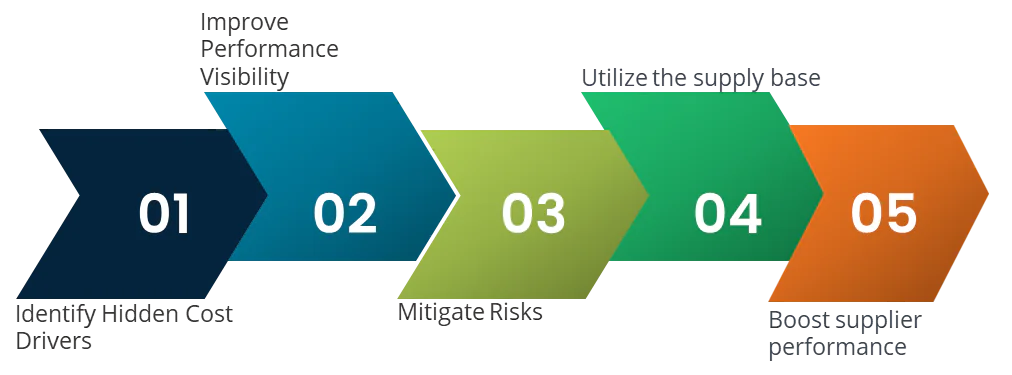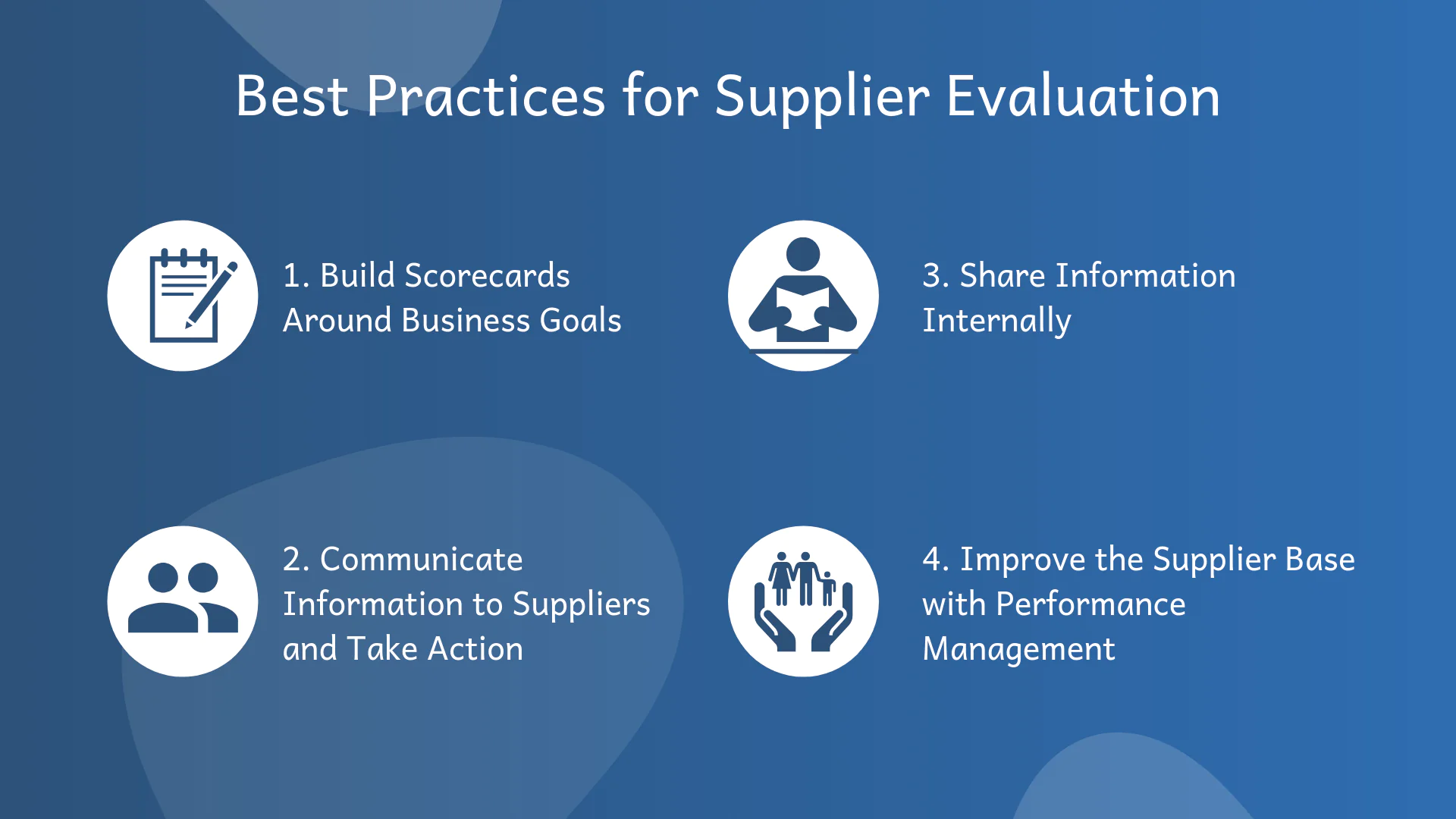Why is it necessary to conduct a supplier assessment?
Conducting a supplier assessment is essential to ensure product quality, reliability, and compliance with standards. It helps identify risks, assess supplier capabilities, and establish a mutually beneficial relationship. Evaluating suppliers helps maintain supply chain integrity, reduce potential disruptions, and enhance overall business performance and customer satisfaction. The evaluation and selection of suppliers carry the utmost importance in the current scenario of global purchasing. It helps companies in structuring the supplier base and improving the efficiency of the supply chain. Organizations in the manufacturing sector need to have a supplier selection and evaluation model in place in order to gain the utmost value from their suppliers. However, evaluating suppliers can be a challenging, costly, inefficient, and inconsistent task for companies. The approaches used by companies can prove to be inadequate and inefficient when it comes to supplier measurement.
The evaluation and selection of suppliers carry the utmost importance in the current scenario of global purchasing. It helps companies in structuring the supplier base and improving the efficiency of the supply chain. Organizations in the manufacturing sector need to have a supplier selection and evaluation model in place in order to gain the utmost value from their suppliers. However, evaluating suppliers can be a challenging, costly, inefficient, and inconsistent task for companies. The approaches used by companies can prove to be inadequate and inefficient when it comes to supplier measurement. Through this blog, we have tried to highlight the relevance of the supplier evaluation process and best practices that can address challenges such as how to :
- Identify hidden cost drivers in the business.
- Figure out approaches and metrics for supplier evaluation.
- Determine actionable supplier opportunities for improvement.
Simply gathering data will not produce a return on investment in supplier evaluation. Companies need to use the results as a starting point for supplier performance improvement.
To know how our experts can help you with real-time insights.
Best Practices for Supplier Evaluation
Importance of Supplier Evaluation

Identify Hidden Cost Drivers
Supply chain inefficiencies can prove to be a major pitfall for companies. However, some of these inefficiencies can be efficiently addressed by improving communications between companies and suppliers. By improving the supplier evaluation and selection process, companies can better understand supplier performance and reduce wasteful costs due to suppliers’ activities such as additional inspections, extra freight charges, obsolete inventory, and many more. Moreover, a better understanding of supplier business practices and processes can enable companies to drive waste out of business.
Improve Performance Visibility
Often companies do not have a clear idea about how their suppliers are performing. By measuring the performance of suppliers, companies can easily improve their performance. The improvement can be more substantial if companies start awarding additional business based on the outcome of supplier evaluation.
Mitigate Risks
Obtaining insights into the supplier performance can help companies to devise effective strategies and mitigate business risks. These risks can be financial and operational and escalate with geographic distance. In addition, the performance of sub-tier suppliers about whom the key suppliers are unaware of can be a major challenge for businesses. Want to know more about it, request more information here.
Utilize the Supply Base
By improving the supplier evaluation system, companies can determine the threshold for suppliers and drive higher-quality results. They can strategize the deadlines for new products and services based on suppliers’ capabilities and performance levels. Leveraging local suppliers can further help companies to reduce total costs and enhance their competitive position by improving the companies’ bottom line.
Boost Supplier Performance
Improving supplier performance is the primary aim of supplier evaluation. While measuring supplier performance has a positive impact, supplier evaluation can further lead to continuous improvement initiatives. With proper supplier evaluation methods and system, companies can analyze different aspects such as quality, delivery, and cost management leading to the poor performance of suppliers. They can even strategize corrective measures to gain positive results.
Want to know how a robust supplier evaluation system can reduce wasteful costs?
What are factors that help in supplier evaluation?
Quality and Reliability:
Product/Service Quality: Evaluate the consistency, performance, and durability of the goods or services provided. Assess the supplier’s track record for meeting delivery schedules and timelines. Verify that the supplier meets the agreed-upon product or service specifications. Consider the supplier’s responsiveness, problem-solving capabilities, and willingness to address issues promptly.
Cost and Pricing:
Compare the supplier’s prices with those of competitors to ensure they are competitive in the market. Evaluate not only the initial purchase price but also long-term costs, including maintenance and operational expenses. Consider additional services or benefits offered by the supplier, such as technical support, warranties, or training.
Compliance and Sustainability:
Ensure the supplier adheres to relevant laws, regulations, and industry standards, which can vary by sector and location. Assess the supplier’s ethical conduct, including fair labor practices, anti-corruption policies, and diversity and inclusion efforts. Determine the supplier’s commitment to sustainability, energy efficiency, waste reduction, and responsible sourcing of materials. Examine the supplier’s engagement in community and social initiatives, such as charitable programs or involvement in local development.
Detailed methods for evaluating suppliers
- When opting for a supplier evaluation, selecting the appropriate approach and method is crucial.
- Various methods exist, including Supplier Scorecards or qualitative methods like interviews with customers or employees.
- The chosen approach should align with the company’s needs and available resources.
- For instance, if time and manpower are limited, a Supplier Scorecard might be more feasible.
- It’s essential to assess which method best suits the company’s objectives and capabilities.
By considering these factors and engaging in a thorough evaluation process, businesses can make informed decisions when selecting suppliers. Keywords: stakeholders, customers, employees, community, market trends, opportunities, business partner, diversity, trust, respect, mutual commitment, boundaryless thinking, business objectives, expertise, production capacity, environmental impact, compliance, specifications, standards, customer service, policy and practice, surveys, customer satisfaction, quality of deliverables, certification.
Click below for a free trial of our supplier evaluation services





